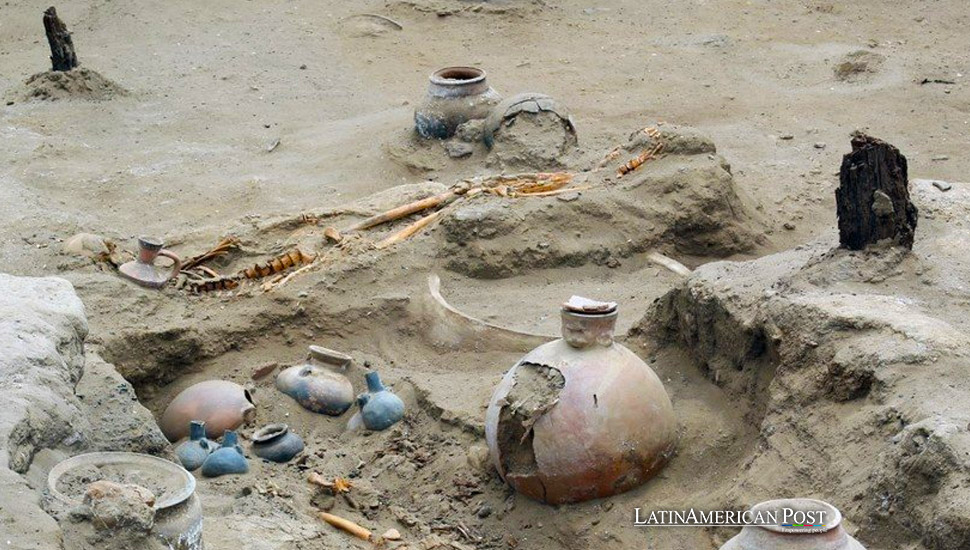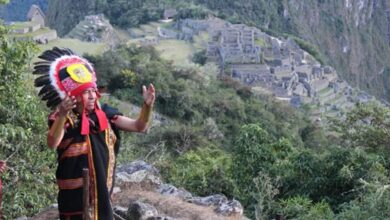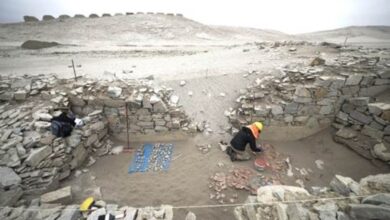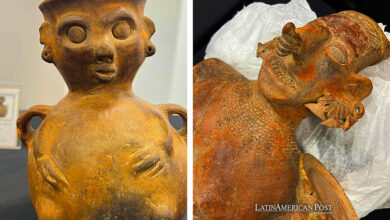The Discovery of a 3,800-Year-Old Pre-Incan Water Cult in Peru

Archaeologists in Peru have uncovered the skeletal remains of a forgotten pre-Incan water cult, shedding new light on the region’s ancient civilizations. The discovery reveals how water worship played a central role in the lives of these early inhabitants, deepening our understanding of South America’s rich history.
In a groundbreaking discovery, archaeologists have unearthed a 3,800-year-old temple burial in Peru that offers a fascinating glimpse into a pre-Incan civilization and its deep reverence for water. The remains in the Queneto archaeological site in the Viru Valley of northwest Peru reveal a forgotten water cult that thrived long before the rise of the mighty Incan Empire. This discovery, which includes the skeletal remains of four individuals, can transform our understanding of early Andean cultures and their significance in the natural world around them.
A Glimpse into Pre-Incan Rituals and Beliefs
The Viru Valley, nestled between the towering Andes mountains and the arid high desert, has long been known for its archaeological richness. The latest find, however, is particularly remarkable. Buried within the Temple Queneto 2, the remains of two children, a teenager, and an adult were found, all positioned on their sides facing the mountains—the source of life-giving water for the region. This burial practice offers a rare insight into the spiritual beliefs of the pre-Incan people, suggesting that water was essential for their physical survival and held deep religious and cultural significance.
The temple itself is associated with a water-centric cult, and the positioning of the bodies further underscores the importance of water worship in this ancient society. According to a statement from the National University of Trujillo, funerary goods, such as stone pendants and snail shells, alongside the remains suggest that these items were likely offerings to the deities believed to control the water flow from the mountains.
The discovery of these remains significantly adds to our limited knowledge of pre-Incan burial practices. The fact that such burials were conducted in a temple dedicated to water worship indicates that these individuals may have held a special status within their community, possibly as priests or members of a religious elite. The presence of children among the buried also raises questions about the role of youth in these rituals and whether they were considered to have a unique connection to the spiritual world.
The Significance of Water Worship in the Andean Desert
The Viru Valley’s unique geography and proximity to the Andes mountains and the desert made water a precious resource for the early inhabitants. In a region where water scarcity could mean the difference between life and death, it is no surprise that a cult centered around water would emerge. Worshiping water deities was likely a way for these ancient people to express their reverence for the life-giving force that sustained their communities.
Water worship is a common theme in many ancient cultures, particularly in regions where water was scarce. Water was seen as a divine gift in the Andean region, where dramatic contrasts between fertile valleys and arid deserts mark the landscape. The discovery of the Queneto temple and its associated burials adds a new dimension to our understanding of how these early societies interacted with their environment and the spiritual significance they attributed to natural resources.
The temple’s location and construction further emphasize the importance of water in this society. Built with cobblestone and clay plaster walls featuring curved corners, the temple’s architecture is unique to the Early Formative period (roughly 1800 to 900 BC). This period predates the rise of the Incan Empire by several centuries, making the temple one of the oldest known religious structures in the region.
Architectural Marvels of the Early Formative Period
The architectural style of the Queneto temple is a testament to the ingenuity and skill of the pre-Incan people. The use of cobblestone and clay plaster to construct the temple walls, along with the curved corners that characterize the structure, showcases a level of sophistication in building techniques that is remarkable for its time. These architectural features are similar to those found in other essential settlements of the Early Formative period, such as Gramalote in the Moche Valley and Huaca Negra near the coast of the Viru Valley.
These early builders were skilled in construction and creating significant public works, including some of the earliest pyramids in the region. The discovery of ceramics at the Queneto site further highlights the technological advancements of this civilization. The ceramics found at the temple are similar to those observed in other significant archaeological sites, indicating that the people of the Viru Valley were part of a broader cultural network that extended across the Andean region.
With its carefully crafted walls and unique design, the temple is a marvel of early Andean architecture. The fact that such a structure was dedicated to worshiping water underscores this resource’s central role in the lives of the people who built it. The temple was not just a place of worship but also a symbol of the community’s relationship with the natural world and their dependence on the mountains for survival.
The Potential for Cultural Tourism in the Viru Valley
The discovery of the Queneto temple and its associated burials has significant implications for future archaeological research in the Viru Valley. According to the research team, only about 1 percent of the massive archaeological site has been excavated, suggesting that much more remains to be discovered. These findings provide a strong case for further exploration and development of the area as a center for cultural tourism.
The team hopes that these discoveries will encourage the Peruvian government to invest in preserving and promoting the Viru Valley as a cultural heritage site. Transforming the valley into a benchmark for cultural tourism could bring significant economic benefits to the region while also helping to preserve its rich archaeological history.
The potential for cultural tourism in the Viru Valley is immense. With its wealth of archaeological sites, including the newly discovered Queneto temple, the valley offers visitors a unique opportunity to explore Peru’s ancient history and gain a deeper understanding of the pre-Incan civilizations that once thrived in the region. By promoting the valley as a destination for cultural tourism, the government can help ensure that these archaeological treasures are preserved for future generations.
The discovery of the Queneto temple reminds us of the rich cultural heritage of the Andean region and the importance of preserving this history. As archaeologists continue to explore the Viru Valley and uncover more about the lives of its ancient inhabitants, we gain a deeper appreciation for the complex societies that existed long before the rise of the Incan Empire. Through continued research and preservation efforts, the legacy of these early civilizations can be safeguarded, allowing us to learn more about our shared human history.
Also read: Peruvian Machu Picchu’s Archaeological Revival
Unearthing the 3,800-year-old temple and burials in the Viru Valley offers a fascinating glimpse into a pre-Incan civilization’s religious practices and architectural achievements. The discovery not only adds to our understanding of the region’s history but also highlights the potential for the Viru Valley to become a major center for cultural tourism in Peru. As we continue to uncover the secrets of the past, the importance of preserving these archaeological sites for future generations cannot be overstated.





